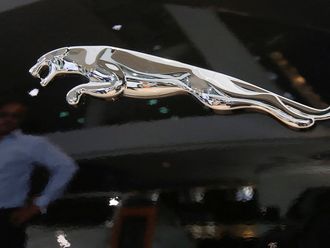The online retail industry has been growing steadily at a compounded annual growth of 17 per cent since 2007, and is estimated to have contributed about $700 billion (Dh2.57 trillion) to the global economy in 2014.
Interestingly, the online retail sector grew even during the global recession, at a time when many brick-and-mortar retailers were forced to scale down or shut.
The Middle East is also fast catching up with the online shopping phenomenon — as per Mastercard’s ‘Online Shopping Report 2014’, more than 40 per cent of banked consumers in the age group of 18-64 years had made an online purchase. Popular categories in Middle East were airlines and travel, consumer electronics, home appliances and apparel.
Given these trends, the question that arises is how well is the traditional retail industry in the Middle East geared up for this changing customer dynamic? The industry is still predominantly driven by brick-and-mortar presence.
A quick scan of the online presence of leading retailers in consumer electronics and apparel categories throws up significant shortcomings in their online offerings — websites that are difficult to navigate, incomplete inventory and lack of comparative information are some of the main lacunae.
So what are some of the key watch-outs for a traditional retailer setting up their online presence? A few pointers on making one’s online offer more impactful:
Experience is everything: While it sounds quite obvious, this simple fact is quite often ignored while designing online wireframes. As a result the consumer experience becomes tedious, resulting into huge opportunity loss for the retailer. Online shopping websites need to be simple, intuitive and easy to navigate.
Another important point to keep in mind is that the website should be suited to mobiles, as majority of online activity these days takes place on mobiles. A small investment in usability engineering at the time of design can reap tremendous benefits, by improving the consumer experience.
Enable comparisons: A key insight that has been used brilliantly by Amazon India in its recent communication is that while consumers go online for convenience, they still would like to see variety as in a real-life store. Browsing and comparing are intrinsic parts of the shopping experience, which consumers do not want to compromise on, and this needs to be replicated in the online format as well.
Therefore, websites that allow easy comparisons are likely to resonate with online shoppers.
Build trust: It is important to recognise that an online shopper is taking a significant leap of faith while purchasing a product/service, without the first-hand touch and feel that she would get in a traditional retail format. Therefore, it is imperative for the online retailer to provide detailed information to the shopper, based on which he can make an informed decision.
Information could be in the form of product specifications, but also in the form of expert reviews and real user comments.
Be transparent: The online shopper does not like surprises. It is quite off-putting for a shopper to go through multiple pages in a shopping journey and come upon a large transaction fee or delivery charge at the end (it would be better to mention these upfront). Such unexpected charges reduce trust in the retailer and need to be avoided as far as possible.
Build strong back-end infrastructure: While developing an online presence is much cheaper than building a brick-and-mortar store, it needs to be backed up by strong infrastructure, in terms of warehousing, delivery mechanisms and customer grievance redressal. From a logistics point of view, markets like the UAE, Kuwait, Qatar, Jordan etc are perhaps easier to manage due to their small size and population concentration in a few cities. But it could be more challenging in larger markets like Saudi Arabia or Egypt.
Also, features like online tracking of orders, efficient exchange policies and a strong call centre for support are essential.
With e-commerce sales expected to reach $15 billion in the Middle East in 2015, there is no doubt that there are huge opportunities. Retailers who are quick to grasp this opportunity and able to build complementary features between their traditional and online offers stand to gain the most.
— The writer is CEO of AMRB, a research consultancy.












